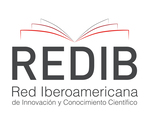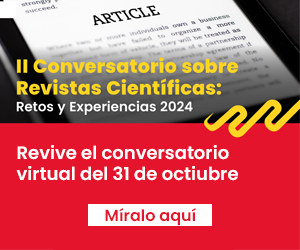Usefulness of intra-operative angiography for surgical treatment of arteriovenous malformations and intracranial aneurysms
DOI:
https://doi.org/10.20453/rmh.v33i3.4337Keywords:
Cerebral angiography, intracranial aneurysm, arteriovenous malformationsAbstract
Objective: To determine the utility of intraoperative angiography (IOA) to detect residual lesions after surgical repair of arteriovenous malformations (AVM) and intracranial aneurysms (ICA). Methods: This is a case series including 778 patients from November 1993 to April 2001; of which 477 underwent surgical intervention. IOA was used in 119 cases. Results: A total of 119 cases were analyzed, 105 patients with AVM (88.2%) and 14 with an aneurysm (11.8%). The mean age was 35 years (range 6 - 69) and males represented 52% of the cases. Both AVM and aneurysms occurred in 17 cases (14.3%). Giant paraclinoid aneurysm was the most common aneurysm (71.3%), whereas supratentorial and grade 3 Spetzler-Martin AVM represented 83.3% and 73.3% of the cases, respectively. A residual lesion was was detected in 7 cases, of which 5 were residual nidus of an AVM and 2 remnant aneurysms. IOA-related complications occurred in 3.4% and mortality was 2.5%. Conclusions: IOA is a useful technique to detect residual cerebro-vascular lesions after open surgeries.
Downloads
References
Dehdashti AR, Thines L, Da Costa LB, et al. Intraoperative biplanar rotational angiography during neurovascular surgery. J Neurosurg. 2009;111(1):188–92. doi: 10.3171/2008.12.JNS081018
Kirsch WM, Zhu YH. Intraoperative digital subtraction angiography for neurosurgery. West J Med. 1990;153(5):547–8.
Balamurugan S, Agrawal A, Kato Y, Sano H. Intra operative indocyanine green video-angiography in cerebrovascular surgery: An overview with review of literature. Asian J Neurosurg. 2011;6(2):88–93.
Riva M, Amin-Hanjani S, Giussani C, De Witte O, Bruneau M. Indocyanine Green Videoangiography in Aneurysm Surgery: Systematic Review and Meta-Analysis. Neurosurgery. 2017;83(2):166–80.
Vitaz TW, Gaskill-Shipley M, Tomsick T, Tew JM. Utility, safety, and accuracy of intraoperative angiography in the surgical treatment of aneurysms and arteriovenous malformations. Am J Neuroradiol. 1999;20(8):1457-1461.
Martin NA, Bentson J, Viñuela F, et al. Intraoperative digital subtraction angiography and the surgical treatment of intracranial aneurysms and vascular malformations. J Neurosurg. 1990;73(4):526–33.
Derdeyn CP, Moran CJ, Cross DT, Grubb RL, Dacey RG. Intraoperative digital subtraction angiography: a review of 112 consecutive examinations. Am J Neuroradiol. 1995;16(2):307-318.
Sherry RG, Anderson RE, Kruger RA, Nelson JA. Real-time digital subtraction angiography for therapeutic neuroradiologic procedures. Am J Neuroradiol. 1983; 4(6):1171-1173.
Lazar ML, Watts CC, Kilgore B, Clark K. Cerebral angiography during operation for intracranial aneurysms and arteriovenous malformations. J Neurosurg. 1971;34(5):706–8.
Foley KT, Cahan LD, Hieshima GB. Intraoperative angiography using a portable digital subtraction unit. J Neurosurg. 1986;64(5):816–8.
Cagnazzo F, Brinjikji W, Lanzino G. Arterial aneurysms associated with arteriovenous malformations of the brain: classification, incidence, risk of hemorrhage, and treatment-a systematic review. Acta Neurochir (Wien). 2016;158(11):2095-104.
Kouznetsov E, Weill A, Ghostine JS, Gentric J-C, Raymond J, Roy D. Association between posterior fossa arteriovenous malformations and prenidal aneurysm rupture: potential impact on management. Neurosurg Focus. 2014;37(3):E4. doi: 10.3171/2014.6.FOCUS14219
Barrow DL, Boyer KL, Joseph GJ. Intraoperative angiography in the management of neurovascular disorders. Neurosurgery. 1992;30(2):153–9
Downloads
Published
How to Cite
Issue
Section
License
Authors assign their rights to the RMH so that may disseminate the article through the means at their disposal. The journal will provide forms of affidavit of authorship and authorization for the publication of the article, which shall be submitted with the manuscript. Authors retain the right to share, copy, distribute, perform and publicly communicate their article, or part of it, mentioning the original publication in the journal.



















